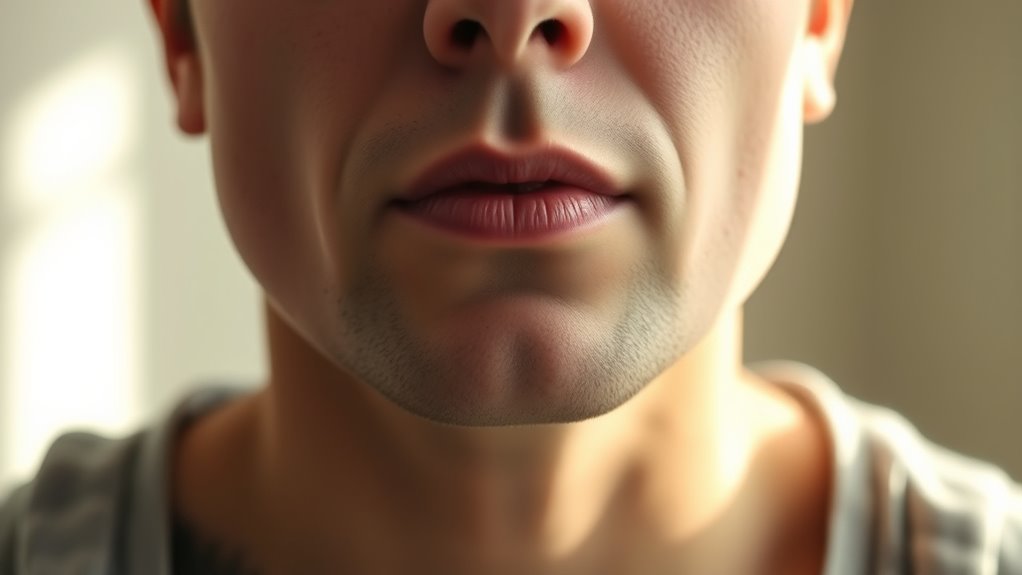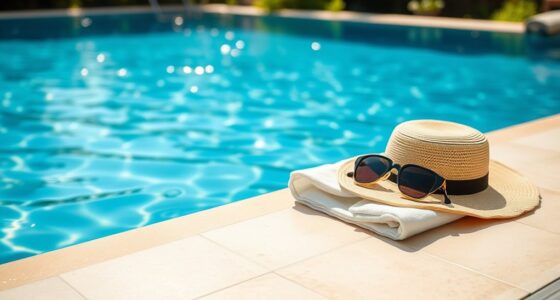Bilateral breathing is important anytime you want to improve your overall well-being, especially during stress or fatigue. It balances airflow between both nostrils, helping your lungs work more efficiently and calming your nervous system. This technique supports mental clarity, reduces tension, and boosts respiratory health. Practicing it regularly can make your breathing more natural and controlled. Keep exploring to discover how incorporating bilateral breathing into daily life can benefit your mind and body.
Key Takeaways
- Bilateral breathing balances airflow between nostrils, enhancing respiratory efficiency and promoting relaxation.
- It is particularly useful during stress, fatigue, or when seeking mental clarity and emotional calm.
- Practicing bilateral breathing supports lung function and stimulates brain hemispheres for better focus.
- Regular use improves breathing patterns, reduces anxiety, and helps manage physical exertion with less effort.
- It matters for maintaining overall respiratory health, mental well-being, and achieving a balanced nervous system.

Bilateral breathing is a simple yet powerful technique that can enhance your respiratory efficiency and promote relaxation. By consciously balancing the inhalation and exhalation between both sides of your body, you can improve your overall breathing efficiency and achieve a greater sense of respiratory balance. When you practice this method, you focus on inhaling through one nostril while keeping the other closed, then switching to the other nostril for the exhale. This rhythmic process helps you become more aware of your breath, encouraging a steady, even pattern that benefits your lungs and nervous system alike.
Many people overlook the importance of breathing efficiency in everyday life. When your breathing is unbalanced, you might notice feelings of stress, fatigue, or difficulty concentrating. Bilateral breathing addresses this issue by promoting symmetrical airflow, which guarantees both hemispheres of your brain and both sides of your lungs work harmoniously. This balance not only enhances oxygen intake but also reduces the likelihood of shallow or irregular breathing patterns that can lead to hyperventilation or discomfort. As you practice, you’ll notice your breathing becoming more natural, deep, and controlled, making it easier to stay calm and centered during stressful situations.
Balanced breathing promotes calm, reduces fatigue, and enhances mental clarity by ensuring harmonious airflow in your lungs and brain.
The key to understanding why bilateral breathing matters lies in its ability to reset your respiratory balance. When you alternate nostrils, you stimulate different nerve pathways and brain hemispheres, which supports better coordination and mental clarity. This technique can be particularly useful if you experience anxiety or sleep difficulties, as it calms your nervous system and encourages a more relaxed state. Over time, regular practice can help you develop a more efficient breathing pattern that requires less effort and energy, freeing you from the cycle of shallow, inefficient breaths that often contribute to fatigue and tension.
Additionally, bilateral breathing can improve your overall lung capacity by encouraging fuller, more diaphragmatic breaths. When your respiratory system functions at its best, you’ll find it easier to manage physical exertion or emotional stress without feeling breathless or overwhelmed. It’s a simple yet effective way to cultivate mindfulness and bodily awareness, grounding you in the present moment while simultaneously strengthening your respiratory health. Regular practice can also help reinforce the importance of air quality, as optimal breathing is closely linked to the cleanliness of your indoor environment. Whether you’re seeking to reduce stress, boost your energy, or simply breathe more effectively, incorporating bilateral breathing into your daily routine offers tangible benefits that can last a lifetime. By consciously engaging in this practice, you take control of your respiratory health and activate a more balanced, efficient way of breathing that supports your overall well-being.
Frequently Asked Questions
Can Bilateral Breathing Improve Athletic Performance?
Improving your breathing efficiency can boost athletic performance by enhancing oxygen delivery to your muscles. Bilateral breathing, which involves alternating nostrils or lungs, helps optimize this process. When you practice bilateral breathing, you activate both sides of your body, increasing oxygen intake and reducing fatigue. This technique can lead to better endurance, quicker recovery, and overall improved performance, making it a valuable tool for athletes seeking to maximize their capabilities.
Is Bilateral Breathing Suitable for Beginners or Only Advanced Practitioners?
Imagine learning to ride a bike with training wheels—you start simple. Bilateral breathing isn’t just for pros; it’s a beginner-friendly technique that helps you manage breathing complexity and build awareness. As you practice, it becomes easier to control your breath, much like steadying your ride. So, yes, bilateral breathing is suitable for beginners, offering a gentle way to improve breath control and deepen your practice gradually.
How Does Bilateral Breathing Affect Lung Capacity Over Time?
Bilateral breathing can improve your lung capacity over time by enhancing lung expansion and diaphragmatic efficiency. As you practice, you’ll notice increased airflow, allowing your lungs to fill more fully with each breath. This technique helps strengthen your respiratory muscles, leading to better oxygen intake and endurance. Consistent practice supports long-term lung health and efficiency, making it a valuable skill for both beginners and experienced practitioners seeking greater respiratory control.
Are There Any Risks Associated With Practicing Bilateral Breathing?
Ever wondered if practicing bilateral breathing has risks? While it’s generally safe, some risk factors and contraindications exist. You might experience dizziness or shortness of breath if you push too hard or have underlying health issues. Always listen to your body and consult a healthcare professional if you have respiratory or cardiovascular concerns. Is maintaining awareness of your limits the key to safe breathing exercises? Yes, it is.
How Long Does It Take to See Benefits From Bilateral Breathing Exercises?
You might start noticing benefits from practicing bilateral breathing within a few days to a couple of weeks. Your breathing rhythm can become more consistent, helping you feel calmer and more relaxed. Regular practice enhances your relaxation techniques, reducing stress and improving focus. Keep practicing daily, and you’ll likely see improvements in your overall well-being as your breathing becomes more balanced and controlled over time.
Conclusion
Bilateral breathing is like a gentle dance, balancing your lungs on both sides to keep your rhythm steady. When you master this dance, your breath flows smoothly like a calm river, nourishing every part of you. It’s the secret key to opening deeper, more peaceful breaths, helping you stay centered amidst life’s chaos. Embrace this rhythm, and watch your mind and body harmonize in perfect unison, like a symphony reaching its crescendo.










